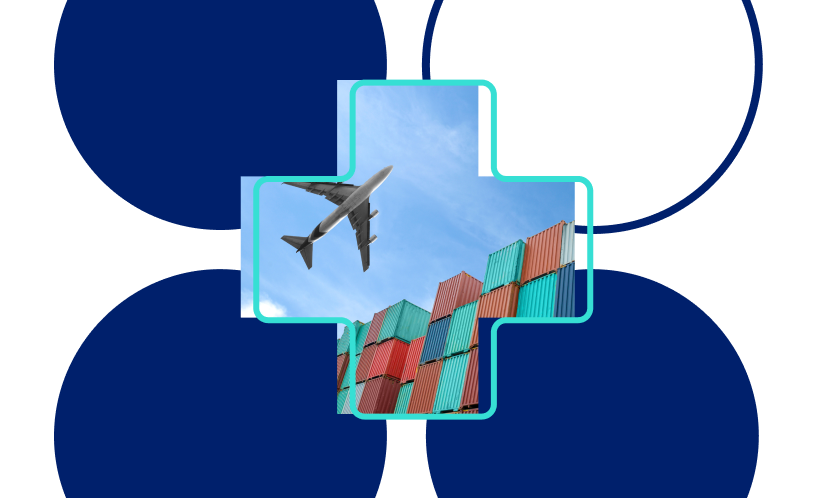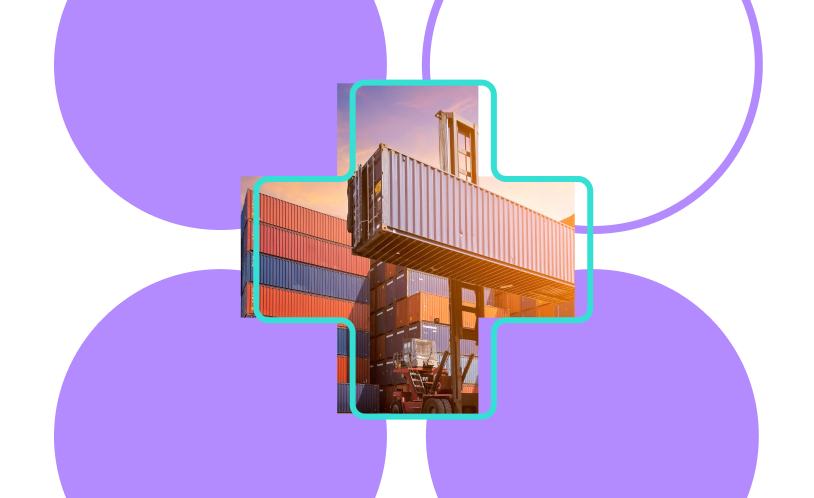A huge variety of industries use textiles, from clothing to accessories, furniture, and more. That means global demand for textiles is high.
Do you import or export textiles? Thinking of getting started?
We’ve written this guide for you. Dive in to learn all about shipping textiles, including how to get the best prices and transit times and how to master compliance and international processes.
Looking for freight quotes for your textiles shipment?
Get instant quotes from dozens of vetted providers.
How to import and export textiles
Here are the major steps in the process of textile importing and exporting:
- Packaging and labeling: work with your supplier to ensure appropriate packaging and labeling to avoid damage or delays.
- Shipping modes: evaluate the most suitable shipping mode for your textiles. Options include air, sea, or express shipping. The choice depends on factors such as the volume of textiles, urgency, and budget constraints.
- Customs compliance: ensure compliance with customs regulations for both importing and exporting.
- Documentation: thoroughly prepare and organize all necessary documentation. Attention to detail in documentation is crucial for a smooth customs clearance process.
- Freight insurance: protect your textiles during transit by securing appropriate freight insurance. This coverage mitigates the risk of loss or damage, providing peace of mind throughout the shipping journey.
- Engage a freight forwarder: partner with a reputable freight forwarder to streamline the process. Freight forwarders specialize in international logistics, handling documentation, customs compliance, and shipping coordination.
To find the best freight forwarder for your needs, leverage the Freightos.com platform. Compare quotes from vetted freight forwarders, communicate directly with your freight forwarder of choice, and manage your shipments with ease.

Procedure for exporting textiles
Let’s get into some of the nitty-gritty details for moving your textiles around the globe smoothly.
Documentation
The textile export process requires you to gather the following documents:
- Commercial invoice: a detailed document providing a comprehensive breakdown of the shipped goods, including their description, quantity, value, and terms of sale
- Packing list: an itemized document detailing the contents of a shipment, including the quantity, weight, and packaging type for each item
- Certificate of origin: an official document certifying the origin of the goods being exported, indicating the country where the products were manufactured
- Bill of exchange: a financial document that serves as a written order from the exporter to the importer, instructing payment on a specified future date
- Insurance certificate: a document issued by the insurance provider confirming that the shipped goods are covered by insurance against loss or damage during transit
- Purchase order or letter of credit: a legal document issued by the buyer to the seller, outlining the terms and conditions of the purchase and specifying payment details
- Customs bond: a financial guarantee ensuring that the importer will comply with customs regulations, including the payment of duties and taxes
- Customs entry documents: the paperwork submitted to customs authorities, providing details about the imported or exported goods and facilitating customs clearance
- Certificates from partner government agencies: special documents required for specific goods ensuring compliance with additional regulations imposed by relevant government agencies
- Export license: an official authorization granted by the government permitting the legal export of specific goods to a designated destination
Licensing
Generally speaking, suppliers are responsible for providing export licenses. If your supplier doesn’t provide one, your freight forwarder will need to arrange one for you, typically at an additional cost. The application process and approval time for export licenses can vary, often ranging from 20 to 60 days.
If you need additional approvals from other regulatory bodies, be sure to work with your forwarder in advance. Not sure if your goods require special approvals? Ask your forwarder for help.
Make sure your goods do not infringe on any copyright laws, especially if you are importing anything with logos. Here too, your forwarder can help.
Typical shipping transit times
How long it takes to ship your goods depends on which shipping mode you choose. Air shipments generally take several days, while sea freight typically takes several weeks.
Getting your paperwork and documentation in order early can prevent unnecessary delays once your goods are ready to ship.
Importing or exporting textiles?
Common textiles that are exported
The global textile trade encompasses a diverse range of products. Here’s a list of some of the most commonly exported textiles:
- Garments: finished clothing items, including shirts, pants, dresses, and outerwear
- Fabrics: various textile materials, such as cotton, silk, wool, and synthetic blends, either in raw form or as finished fabric rolls
- Home textiles: products used for home decor and utility, including bed linens, towels, curtains, and rugs
- Technical textiles: specialized textiles designed for technical purposes, such as medical textiles, geotextiles, and industrial fabrics
- Apparel accessories: accessories that complement garments, including hats, scarves, gloves, and belts
- Specialty textiles: textiles designed for specific applications, such as flame-resistant fabrics, waterproof textiles, and anti-bacterial textiles
How much does it cost to export or import textiles?
Determining the cost of exporting or importing textiles internationally involves various factors such as shipment size, destination, and shipping method. Here are some general estimates to help you gauge potential expenses:
- FCL (Full Container Load): shipping a full container load, where your goods fill an entire container, typically costs between $5,000 to $6,000
- LCL (Less than Container Load): if your goods do not fill an entire container and will be shipped along with other boxes or pallets, LCL costs approximately $700 to $1,000
- Air freight: shipping by air can range from $5 per kilogram (for packages weighing around 300 kilograms) to $65 per kilogram (for packages weighing around 10 kilograms).
For a more accurate calculation tailored to your specific needs, consider using our free freight calculator. This tool takes into account various shipping parameters, such as destination, shipping method, package size, and weight, to provide a customized estimate based on your unique requirements.

Which countries are the biggest exporters of textiles?
These nations stand out as the biggest exporters of textiles internationally:
- China: China dominates as the world’s largest exporter of textiles, providing a wide array of products to international markets
- India: India’s diverse production caters to both domestic and international demands, securing its position as a major exporter
- Germany: renowned for high-quality textiles and advanced manufacturing, Germany holds a prominent spot among the top textile-exporting nations
- Italy: famed for its fashion and textile craftsmanship, Italy stands as a significant exporter, particularly in luxury and high-end textile markets
- Bangladesh: emerging as a major player, Bangladesh is a top exporter, focusing on garments and textiles that cater to a diverse global market
- Vietnam: Vietnam has become a notable exporter, offering competitive textile products in the international market
- Turkey: leveraging its strategic location and manufacturing capabilities, Turkey plays a vital role as a key exporter of textiles
- Pakistan: Pakistan consistently contributes to the global textile supply chain with a variety of products
- South Korea: known for technological advancements, South Korea’s textile exports feature innovation and high-quality products
Importing and exporting textiles from India
Textile and clothing exports play a pivotal role in India’s economy. The industry benefits from the country’s rich textile tradition, abundant raw materials, cost-effective production, and global demand for diverse and high-quality textile products.
The import and export of textiles in India are governed by the Export-Import (EXIM) Policy, covering eligibility, export items, procedures, and incentives.
The process of exporting textiles from India is as follows:
- Obtain an export license: start by securing an export license from the Directorate General of Foreign Trade (DGFT)
- Ensure quality compliance: verify that your goods adhere to the quality standards set by the destination country
- Secure necessary certificates: obtain required certificates or permits from relevant authorities
- Engage a freight forwarder: select a reliable freight forwarder to assist in the shipping process
Whether you’re importing and exporting from India or elsewhere, comparing quotes from multiple freight forwarders is the best way to get the fairest price and superior service. Use Freightos.com’s marketplace to compare quotes, book and manage shipments, and communicate with your freight forwarder – all in one place.



